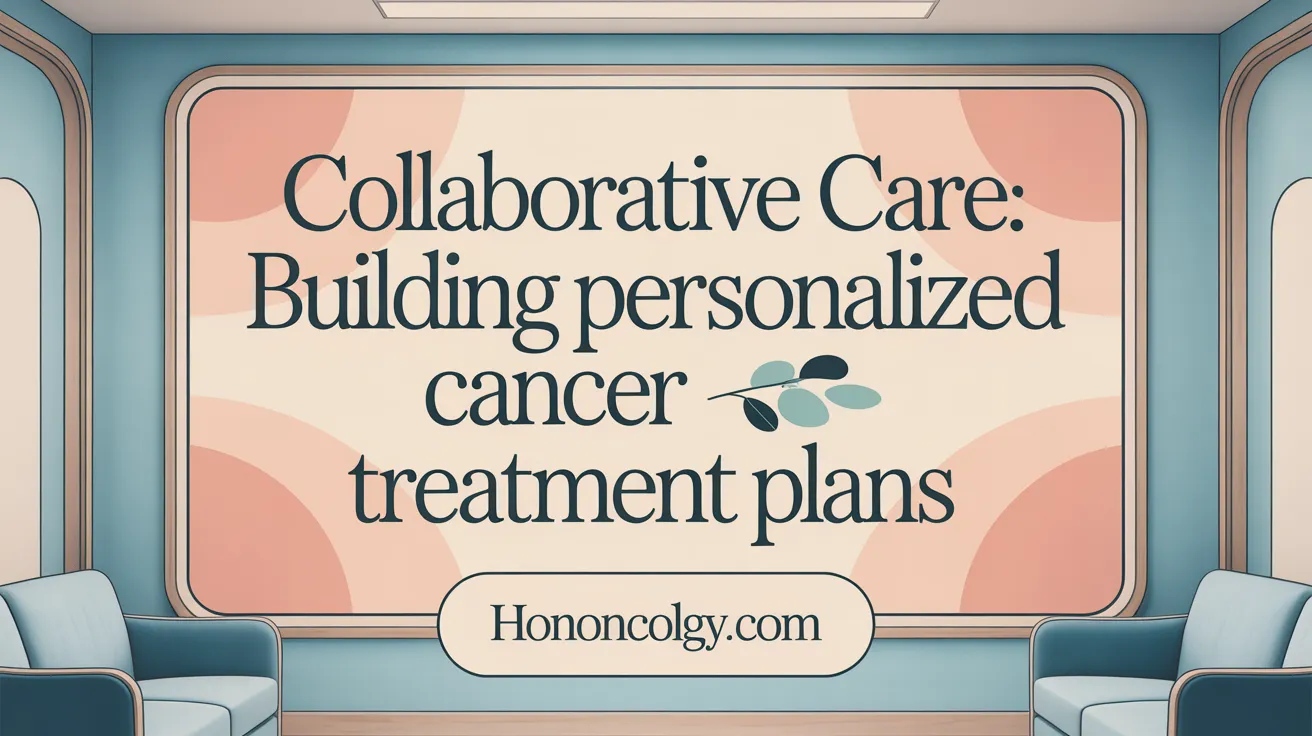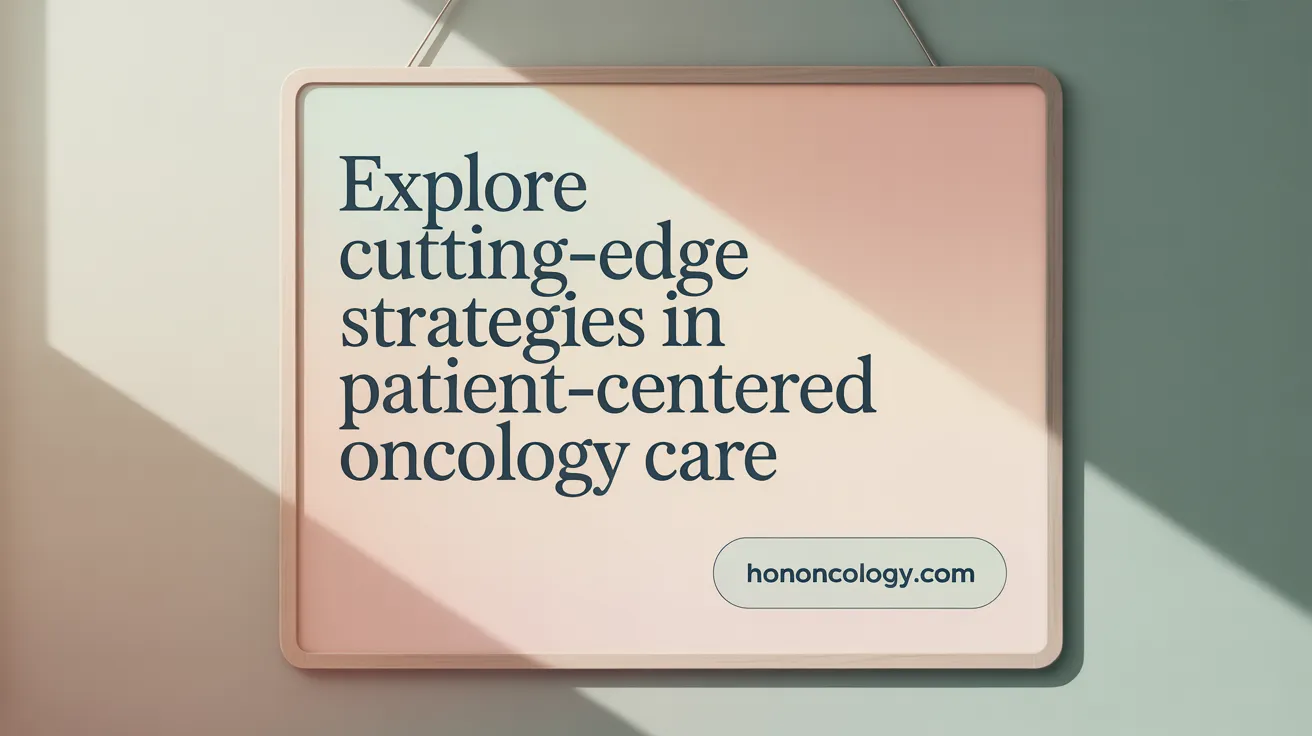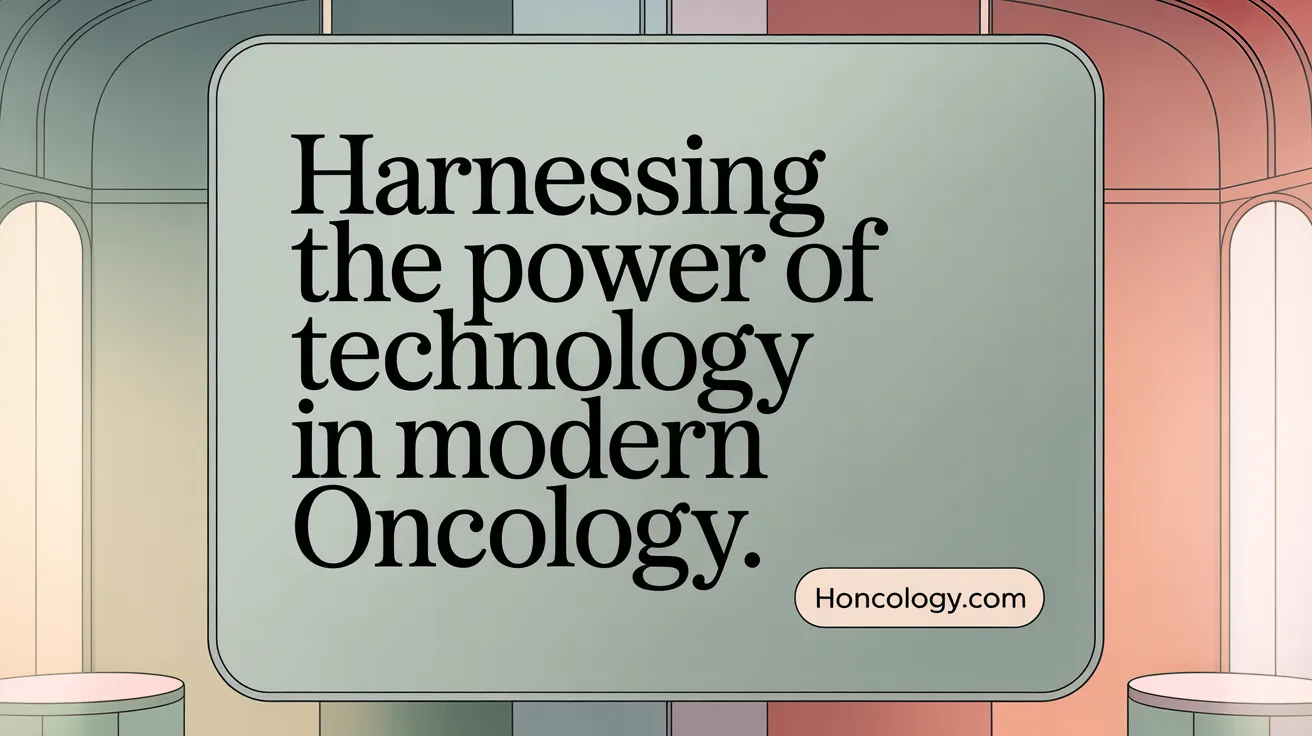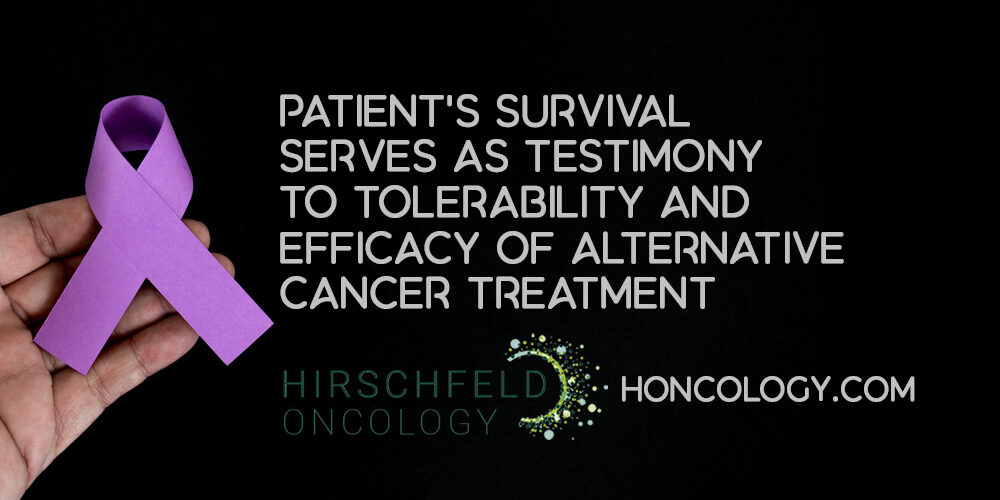Introduction to Patient-Centric Advances in Oncology
Overview of patient-centric care in oncology
Patient-centric care in oncology focuses on tailoring treatment to individual patients' values, preferences, and needs. It improves outcomes by ensuring that care aligns with what patients find most important, involving them actively in decision-making throughout the cancer care continuum.
Importance of integrating patient preferences and innovative treatments
Advancements in targeted therapies, immunotherapies, and adaptive clinical trial designs now allow treatments to be customized based on tumor genetics and patient characteristics. These innovations reduce side effects and improve effectiveness, emphasizing respect for patient choices and supporting informed decisions about complex therapies.
Role of multidisciplinary collaboration and technology
Delivering patient-centered oncology requires coordinated teamwork among oncologists, nurses, specialists, and supportive care providers. Modern technologies like telehealth, electronic health records, artificial intelligence, and remote monitoring enhance communication, symptom management, and access to care. Such integration enables comprehensive, personalized care that adapts to each patient’s unique situation and preferences.
Leadership Driving Patient-Focused Oncology at Hirschfeld Oncology
Who leads the medical team at Hirschfeld Oncology?
Dr. Azriel Hirschfeld leads the medical team at Hirschfeld Oncology. He is a board-certified medical oncologist with extensive expertise in hematology and internal medicine, practicing in Brooklyn, NY.
Integration of compassion and scientific rigor
Under Dr. Hirschfeld's leadership, the team places a strong emphasis on combining compassionate care with the latest scientific advances. This patient-centered approach ensures each individual’s preferences and needs are respected while leveraging cutting-edge cancer research.
Personalized treatment planning with innovative therapies
Dr. Hirschfeld guides the development of personalized treatment plans that incorporate innovative therapies such as immunotherapy, targeted therapy, and low-dose combination chemotherapy. This strategy aims to deliver effective treatments with minimized toxicity, improving patient quality of life.
His leadership fosters a holistic approach that not only pursues the best clinical outcomes but also supports patients emotionally and socially throughout their cancer journey. Commitment to advancing treatment through clinical trials and research further strengthens Hirschfeld Oncology’s patient-focused model.
Multidisciplinary Collaboration: Crafting Personalized Treatment Plans

How does the medical team at Hirschfeld Oncology collaborate to develop treatment plans?
At Hirschfeld Oncology, delivering personalized cancer care is achieved through a multidisciplinary cancer care teams approach. This team includes medical oncologists, radiation oncologists, surgeons, oncology nurses, social workers, and dieticians. Each specialist contributes unique expertise to address the complex needs of cancer patients.
Regular coordination is maintained through frequent team meetings and open lines of communication. These interactions ensure that all providers align on treatment goals and coordinate care plans effectively. Continuous monitoring of patient progress allows the team to adapt therapies promptly.
Treatment plans are comprehensive and may combine surgery, chemotherapy, radiation, immunotherapy, or their combinations tailored to the patient’s specific cancer type and personal preferences. Supportive care is a critical element integrated alongside treatment to manage side effects, provide psychosocial support, and promote overall patient well-being. This approach reflects patient-centered care in oncology, emphasizing active communication and coordination of oncology services.
This patient-centered, science-driven collaboration is championed by leaders like Dr. Karolina Plonowska-Hirschfeld and Dr. Sue Yom, who emphasize both clinical excellence and compassionate care. Their coordinated efforts help optimize outcomes and improve quality of life for patients facing cancer.
The Central Role of Patient Advocacy at Hirschfeld Oncology
Empowering patients through advocacy
At Hirschfeld Oncology, patient advocacy is a cornerstone of care, ensuring patients are well-informed and actively involved in their treatment decisions. The team, led by Dr. Azriel Hirschfeld, fosters open communication and builds strong relationships to understand and respect each patient's unique preferences and values. This empowerment is critical in navigating complex cancer treatments and helps patients feel supported throughout their journey.
Addressing psychosocial and emotional care
Beyond medical treatment, Hirschfeld Oncology prioritizes psychosocial support by integrating oncology social workers and specialized staff into the care team. These professionals assist patients in managing emotional challenges, moral distress, and the psychological impacts of cancer. Holistic care approaches enhance emotional well-being, reduce patient anxiety, and improve overall quality of life (patient-centered care in oncology).
Incorporation of patient perspectives into treatment
Dr. Hirschfeld's multidisciplinary team actively incorporates patient perspectives when designing personalized treatment plans. This patient-centered approach supports shared decision-making and ethical care delivery. Hirschfeld Oncology also embraces innovative therapies, balancing scientific advances with compassionate attention to patients' lived experiences. Such advocacy positively influences treatment satisfaction and clinical outcomes, reflecting a commitment to truly patient-centered oncology (Patient-Centered Care in Precision Oncology, Patient-Centric Cancer Clinical Trial Design).
Innovative Strategies Advancing Patient-Centered Cancer Care

What innovative strategies does Hirschfeld Oncology use in their cancer care?
Hirschfeld Oncology applies a multifaceted approach combining cutting-edge research with personalized treatment to enhance patient outcomes.
They participate in clinical trials testing novel drug combinations, such as immunotherapies paired with targeted agents like PARP and KRAS inhibitors. These combinations are selected based on a patient’s unique genomic profile, enabling precision medicine.
Advanced drug delivery methods involving nanoparticles and viral vectors are explored to improve targeting of tumor cells, thereby enhancing treatment efficacy and reducing side effects. Stem cell technologies also play a role in advancing therapeutic options.
In radiotherapy, Hirschfeld Oncology utilizes innovative techniques including intraoperative and preoperative radiotherapy. These approaches focus radiation more precisely on tumors, which better preserves healthy tissue and lessens toxicity.
Importantly, these novel methods are integrated with standard chemotherapy, immunotherapy, and surgery protocols. This combination aims to optimize tumor control while supporting quality of life.
By embracing adaptive clinical trial designs, real-time molecular profiling, and patient-centered care practices, Hirschfeld Oncology aligns with emerging oncology trends to provide personalized, effective, and tolerable cancer treatment.
Revolutionizing Clinical Trials with Patient-Centered Designs
Adaptive trial designs such as I-SPY 2
Adaptive clinical trials represent a major innovation in oncology research, allowing more personalized and efficient therapy assessments. The I-SPY 2 trial exemplifies this approach by dynamically assigning breast cancer patients to treatments based on their tumor biology and response, reducing toxicities and improving outcomes. This response-based stratification highlights a shift from traditional fixed protocols to flexible adaptive clinical trial designs that prioritize patient experience and treatment optimization.
Use of molecular profiling and ctDNA monitoring
Molecular profiling plays a critical role in modern clinical trials by identifying targetable tumor alterations upfront. Trials increasingly incorporate longitudinal monitoring of circulating tumor DNA (ctDNA) monitoring, which offers a real-time view of tumor burden and resistance mechanisms. This biomarker-driven strategy enables timely treatment adjustments tailored to each patient's evolving cancer profile, markedly improving the precision and effectiveness of trials.
N-of-1 trials and digital twins
Emerging models like N-of-1 clinical trial models treat individual patients as their own control, offering personalized insights especially in rare cancers or those with low-prevalence biomarkers. Digital twin technology in oncology, leveraging computational simulations of patient-specific disease and treatment responses, further supports the design of flexible and highly individualized trial frameworks, advancing patient-centric cancer clinical trial design frontiers.
Engagement of patient advocates and virtual appointments
Patient-centered trial designs increasingly emphasize early involvement of patient advocates to ensure research addresses patients' needs and preferences. Virtual appointments in clinical trials and patient-reported outcomes integrate into trial protocols to reduce patient burden, facilitate close monitoring, and improve communication. These innovations contribute to higher participation rates and enrich patient experience throughout the clinical trial journey.
Improving Clinical Trial Accessibility and Participation

What are the barriers to clinical trial participation?
Despite their vital role in developing new cancer treatments, clinical trial participation rates remain low, averaging about 5%. Key hurdles include strict eligibility criteria that limit patient inclusion and practical difficulties such as travel requirements to academic medical centers. These factors disproportionately impact patients with compromised health status and those living far from specialized institutions.
How can clinical trials be brought closer to community settings?
One promising strategy to increase participation is decentralizing trials by establishing them in community healthcare settings. This reduces travel burdens and makes access more feasible for a broader patient population. Additionally, ongoing efforts aim to minimize treatment side effects through optimized dosing and adaptive clinical trial designs, making participation more tolerable and appealing to patients.
Why is education about clinical trials important?
Early and clear education about available clinical trial options is crucial. When patients are informed at the start of their cancer treatment journey, they can make better decisions and consider participation as a viable path. Educating patients helps demystify trials and addresses concerns regarding safety, potential benefits, and expectations.
What collaborative efforts support improved access?
Enhancing clinical trial accessibility requires coordinated efforts among various stakeholders: patients, advocacy groups, pharmaceutical industry players, healthcare providers, and policymakers. Such collaborations are essential to address structural barriers, streamline eligibility criteria, increase trial availability in diverse locations, and advocate for policies that facilitate broader inclusion. The aspirational goal is to markedly increase patient participation rates to advance cancer research and treatment options (Importance of clinical trials in cancer treatment.
Precision Oncology and Patient-Centered Care Integration
How is genomic profiling used to tailor cancer therapies?
Genomic profiling is a cornerstone of precision oncology. It involves analyzing the genetic and molecular makeup of a patient's tumor to identify specific mutations or alterations that can be targeted with personalized therapies. Techniques such as next-generation sequencing and circulating tumor DNA (ctDNA) monitoring enable clinicians to select treatments that precisely address tumor vulnerabilities, improving both efficacy and safety. For example, targeting HER2 in breast cancer or KRAS mutations in lung adenocarcinoma illustrates how genomic insights guide therapy choices.
How are patient preferences respected in treatment decisions?
Respecting patient preferences is fundamental to patient-centred care in precision oncology. Care teams engage patients by providing clear, personalized information about treatment options, benefits, and risks, facilitating informed decision-making. Support for patients includes acknowledging their values, emotional needs, and preferences throughout testing and therapy selection. This approach strengthens shared decision-making and fosters trust, empowering patients to guide their care journeys.
What is the impact of patient-centered precision oncology on psychological outcomes and therapy delivery?
Integrating patient-centered approaches improves psychological well-being by reducing anxiety and enhancing patients' sense of control. Personalized care also leads to tailored therapy delivery that minimizes toxicities and increases treatment adherence. For instance, adaptive clinical trial designs incorporating patient experiences can reduce side effects and optimize dosing, contributing to better treatment outcomes and quality of life.
Why is research needed across the full cancer care continuum?
Current studies largely focus on breast cancer during treatment, leaving opportunities to expand patient-centered precision oncology research beyond this scope. Research spanning diagnosis, treatment, survivorship, and end-of-life care is essential to comprehensively understand how to best support patients at all stages. Such investigations will ensure continuous improvement in respecting preferences, enhancing support, and optimizing therapies throughout the cancer journey, as discussed in patient-centred care in precision oncology.
Leveraging Technology to Enhance Patient Care in Oncology

Telehealth and Remote Monitoring
Telehealth and remote monitoring have revolutionized how cancer care is delivered, allowing patients to receive support and medical oversight from home. These technologies enable real-time transmission of patient data, such as physical activity and vital signs, reducing the need for hospital visits. This approach facilitates early symptom detection, timely interventions, and enhances convenience for patients with mobility or travel challenges. For more information, see Technological advancements in cancer care and cancer care delivery innovations.
Artificial Intelligence in Diagnosis and Treatment
Artificial intelligence (AI) plays an increasingly vital role in improving cancer diagnosis and treatment. AI models analyze clinical data quickly to aid in cancer classification, staging, and prognostication. For instance, AI-powered risk assessment tools can predict lung cancer years before symptoms appear, leading to earlier intervention. Furthermore, AI supports personalized treatment by identifying patterns that guide therapy choices and predict adverse events, ultimately improving patient outcomes. More details can be found at AI in cancer diagnosis and Patient-Centered Research Using AI.
Electronic Health Records for Continuous Care
Electronic health records (EHRs) enhance continuity and coordination in oncology care by consolidating patient information. They reduce fragmentation of data, allow comprehensive trend analysis, and ensure that healthcare providers have reliable information to guide treatment plans. EHRs also facilitate surveillance strategies that reduce morbidity and mortality by ensuring timely follow-up and consistent monitoring throughout the cancer care continuum. See more about this in Digital technologies in oncology nursing and patient-centered care in oncology.
Virtual Reality for Symptom Management and Rehabilitation
Virtual reality (VR) offers interactive environments designed to manage treatment-related symptoms effectively. It supports exercise rehabilitation, psychological stress reduction through distraction and relaxation techniques, and cognitive behavioral therapy. These immersive technologies provide non-pharmacologic symptom relief, improve patient comfort, and contribute to better quality of life during and after cancer treatment. For more, consult Simulation technologies in oncology nursing and Impact of technology on cancer symptom management.
Addressing Financial Toxicity and Survivorship Needs
What financial burdens do patients face with modern cancer therapies?
The high costs of new cancer treatments, including immunotherapies in cancer and CAR-T cell therapy advancements, often exceed $100,000 per cycle, causing significant financial toxicity in cancer treatment for patients. This burden includes not only medical bills but also related expenses and economic hardship that can lead to bankruptcy. Despite insurance coverage, many patients struggle with the material, psychological, and behavioral impacts of treatment costs.
How can financial navigation and early screening help?
Financial navigation services and early screening for financial distress are crucial strategies to mitigate the negative effects of costly cancer care. These programs provide patients with guidance on managing expenses, accessing assistance programs, and planning their treatment journey more sustainably. Early identification of at-risk patients enables timely interventions to reduce financial strain.
Why is specialized survivorship care important?
As the population of cancer survivors grows, personalized survivorship care that addresses physical, emotional, and psychosocial needs is increasingly vital. Cancer survivorship care programs focus on managing treatment side effects, monitoring for recurrence, and improving quality of life. Special attention is given to fears of recurrence and the unique challenges faced by those living with metastatic disease.
How do shared decision-making and narrative medicine enhance patient care?
Shared decision-making in oncology actively involves patients in choosing treatments aligned with their values and preferences, improving engagement and satisfaction. Narrative medicine complements this by fostering empathy and trust through understanding patients’ stories and experiences. Both approaches contribute to holistic, patient-centered care in oncology that addresses not only clinical outcomes but emotional and psychosocial wellbeing.
Emerging Therapeutic Modalities and Their Patient-Centric Benefits
Targeted Small Molecule Agents and ADCs
Cancer treatment has evolved with the introduction of small molecule targeted agents that selectively inhibit tumor growth pathways. These treatments, such as kinase inhibitors, offer patients enhanced efficacy with reduced toxicity compared to traditional chemotherapy. Antibody-drug conjugates (ADCs) combine the specificity of monoclonal antibodies with the potency of cytotoxic drugs, delivering targeted therapy directly to cancer cells and minimizing damage to healthy tissues. This specificity helps reduce side effects and improves patient quality of life.
Cell-Based Therapies Including CAR-T and CAR-NK Cells
Cell-based therapies for cancer represent a breakthrough in oncology, leveraging the patient's immune system to fight cancer. CAR-T therapy in gastric and esophageal cancers has demonstrated long-term remission in hematologic cancers and is expanding to solid tumors through ongoing trials. CAR NK cell clinical trials for solid tumors and hematologic cancers, engineered similarly, offer promising antitumor activity with potentially fewer side effects. These therapies provide personalized treatment options that address tumor heterogeneity and have shown encouraging patient outcomes with manageable toxicity profiles.
Gene Therapy Advances and Neoantigen Vaccines
Gene therapy in cancer treatment, including mRNA technology and CRISPR-based editing, are advancing precision oncology by correcting genetic abnormalities or boosting immune responses. Neoantigen vaccines, which train the immune system to recognize tumor-specific mutations, represent a novel patient-centric approach with fewer systemic side effects. Early-phase clinical trials have shown these vaccines can induce robust immune reactions targeting tumors, improving disease control and potentially reducing relapse.
Integration with Traditional and Combination Treatments
Modern cancer care increasingly employs combinations of emerging cancer therapies including targeted agents, immunotherapy, and conventional treatments such as chemotherapy and radiation. This integrated approach aims to maximize efficacy while minimizing toxicity, often personalized by molecular tumor profiling. Patient-centric trial designs enable dynamic adjustments based on individual responses, improving tolerability and patient experience. In sum, these emerging modalities enhance therapeutic precision and patient comfort, heralding a new era of personalized cancer care.
Advances in Biomarker and Diagnostic Technologies for Personalized Care

How is circulating tumor DNA (ctDNA) and liquid biopsies improving cancer care?
Circulating tumor DNA (ctDNA) monitoring and liquid biopsies have revolutionized cancer diagnostics by providing a non-invasive way to detect and monitor tumors. Instead of traditional invasive tissue biopsies, these approaches use blood samples to identify cancer-specific genetic alterations. This allows for early detection, real-time monitoring of treatment response, and identification of minimal residual disease. For example, ctDNA detection can predict breast cancer relapse with a median lead time of 15 months before clinical symptoms appear, enabling earlier intervention. For more information, see circulating tumor DNA (ctDNA) in cancer detection and liquid biopsies for cancer monitoring.
What role does genomic sequencing and AI-powered diagnostics play in treatment personalization?
Genomic profiling techniques, such as next-generation sequencing (NGS) and whole-exome sequencing (WES), are critical for uncovering actionable mutations within tumors. Integrating AI-powered diagnostics further enhances this process by rapidly analyzing large data sets to classify cancers, predict risk, and guide treatment decisions. AI models like MIT’s Sybil improve early lung cancer detection years before symptoms arise. These technologies support tailored therapies by identifying biomarkers specific to a patient's cancer, paving the way for precision oncology. Learn more about genomic profiling tools and AI in cancer diagnosis.
How are early detection tests with high sensitivity impacting outcomes?
Recent advancements have produced blood-based screening tests capable of detecting multiple early-stage cancers with high accuracy. Such non-invasive multimodal tests have the potential to transform population-wide cancer screening by detecting tumors at a curable stage. Additionally, breath-based assays and biomarker panels combining proteins and microRNAs are emerging as promising tools to identify early disease changes with greater sensitivity than traditional methods. See details on early-stage cancer blood test and protein biomarker assays.
In what ways are molecular markers guiding therapy decisions?
Molecular markers like HER2, EGFR, BRAF, and MSI-H guide clinicians in selecting targeted therapies that precisely attack tumor vulnerabilities. For example, HER2 status directs anti-HER2 therapies in breast cancer, while EGFR mutations inform the use of epidermal growth factor receptor inhibitors in lung cancer. Integrating biomarker data with immunotherapy and cell therapies such as CAR-T offers a personalized, patient-centric approach that improves efficacy while minimizing toxicity. Further reading includes targeted cancer drugs, CAR-T cell therapy applications, and checkpoint inhibitors in cancer treatment.
These technological advances collectively underpin a shift to personalized cancer care, enhancing early diagnosis, treatment planning, and patient outcomes through biomarker-driven decision-making and non-invasive diagnostics.
Holistic Cancer Care: Multidisciplinary Support Services
What does comprehensive cancer care include?
Comprehensive cancer care addresses more than just the disease itself—it includes physical, nutritional, emotional, psychosocial, spiritual, and financial support. This holistic approach is crucial for improving patients' quality of life and long-term outcomes. For more information on comprehensive cancer care resources, see Comprehensive cancer care services.
How do patient navigators enhance cancer care?
Patient navigators play a vital role by making cancer care more efficient, coordinated, and personalized. They help guide patients through complex treatment pathways, ensuring smooth communication among multidisciplinary teams and reducing gaps in care. Learn more about care coordination and patient navigators at Optimizing care delivery for patients with cancer.
What specialized support exists for caregivers and special populations?
Support services recognize the needs of family caregivers, aiming to reduce their stress and improve overall well-being. Additionally, there are tailored resources for adolescents and young adults, geriatrics, and other specific groups to address unique challenges during and after treatment. See additional details on patient-centered care in oncology and multidisciplinary teams.
How are guidelines and digital tools used in patient-centered care?
Evidence-based guidelines and care action plans, such as the 4R Care Sequences®, help standardize best practices across the cancer care continuum—from diagnosis through survivorship. Digital resources, including communication tools, care matrices, and advocacy playbooks, empower oncology professionals to implement patient-centric care consistently. Explore these digital tools and frameworks further at comprehensive cancer care resources.
This multidisciplinary, comprehensive approach, supported by research and technology, enhances cancer care by meeting diverse patient and caregiver needs while promoting personalized treatment and supportive care.
Conclusion: The Future of Patient-Centric Oncology Care
Advances in Patient-Focused Research and Care
Recent progress in oncology has been marked by an emphasis on treatments tailored to individual patients. Innovations such as adaptive clinical trials, precision therapies guided by molecular profiling, and novel immunotherapies ensure treatments are more personalized and effective. Technologies like telehealth, remote monitoring, and artificial intelligence support continuous care and symptom management from home, enhancing patient comfort and access.
Integrating Innovation with Compassion
While cutting-edge techniques and therapies are advancing rapidly, integrating these with compassionate, patient-centered care remains essential. Efforts focus on respecting patient preferences, providing clear education and emotional support, and involving patients actively in decision-making. Multidisciplinary teams and comprehensive care plans address physical, psychosocial, and financial needs, ensuring holistic support throughout the cancer journey.
Commitment to Improving Outcomes and Quality of Life
The future of oncology embraces both scientific innovation and a deep commitment to improving patient quality of life. Innovations such as personalized vaccines, liquid biopsies, and sophisticated drug delivery methods promise better outcomes with fewer side effects. Increased access to clinical trials and reduced participation barriers aim to bring these advances to more patients. By fostering collaboration among patients, providers, researchers, and policymakers, the field strives for a future where cancer care is both highly effective and deeply patient-centric.





.png)


.png)
.png)




